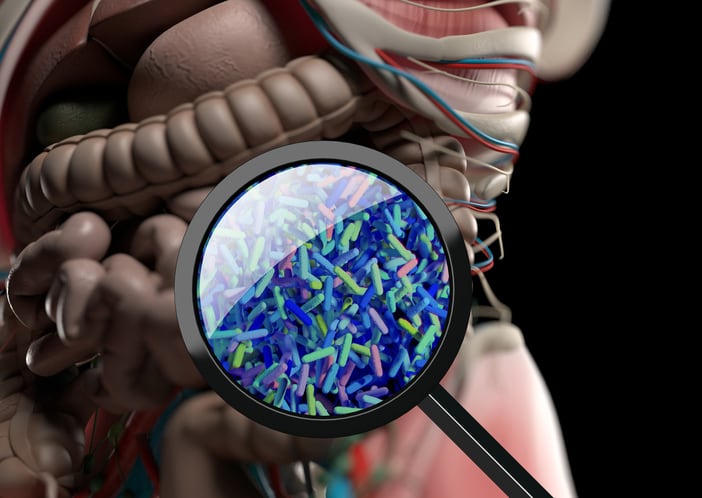This comprehensive review of over 130 studies profiled six classes of flavonoids and how they interact with the gut microbiota to induce physiological changes and benefits.
It concluded that overall, flavonoid consumption enriches potentially beneficial gut microbiota such as Bifidobacterium and Lactobacillus, often at the expense of the pathogenic bacteria Clostrodium spp. In addition, the study highlighted other benefits associated with flavonoid consumption such as the production of breakdown products like SCFAs believed beneficial to human intestinal cells.
However, the authors underline the need for more studies to elucidate the correlation between flavonoid consumption, human gut microbiota and biological activities.
“Additional research on the impact of various specific flavonoid compounds, various doses and regiments on a wider range of chronic diseases is required,” they wrote, in the British Journal of Nutrition.
“Studies combining and correlating microbial community analyses not only with flavonoid or other dietary compounds intake with direct and accurate measurements of health outcomes are especially needed.
Natural polyphenol metabolites
Flavonoids are a major group of secondary metabolites found in several dietary sources, including fruit, vegetables, tea, coffee and wine. They are well recognised for their potential anti-carcinogenic, antioxidant, antimicrobial and anti-inflammatory effects. In addition, they have been shown to mitigate against diabetes, obesity, cardiovascular and neurodegenerative diseases and metabolic syndrome.
Their beneficial effects depend mainly on their intrinsic bioavailability and vary between different subclasses. Only 5-10% of ingested flavonoids are absorbed in the small intestine, with the rest undergoing enzymatic breakdown by the microbiota in the large intestine to yield aglycones that pass through cell membranes to perform their biological functions.
Two-way interaction
In addition, flavonoid ingestion can modulate the gut microbial community in a two-way interaction. Firstly flavonoids are metabolised by intestinal microbiota that enhance their bioavailability and secondly, flavonoids can modulate the intestinal microbial population structure.
“The two-way interaction between flavonoids and intestinal microbiota can be used to modulate the composition and diversity of the intestinal microbiome. This reciprocal relationship between dietary flavonoids and gut microbiota often enhances the biological activity of flavonoids, since their bioactive metabolites may have greater biological action than their parent compounds,” wrote the authors.
The researchers summarised the chemical structure of each flavonoid class, then explained how they are metabolised and how their biotransformation products affect gut microbiota population and induce physiological changes.
Anthocyanins
These hydrophilic flavonoids found in red, blue and black berries are the most studied of all the flavonoids in relation to interactions with the microbial community and health outcomes.
The authors said that collectively, these studies present anthocyanins as “valuable health promotors” via modulation of commensal gut microbiota as well as by exhibiting a direct impact through their biological activities and those of their metabolites.
“Anthocyanin-rich foods hence can be considered valuable prebiotic modulators, that can change the gut community towards higher levels of Lactobacillus spp and Bifidobacterium spp,” they wrote.
Flavonols
Found in onions, broccoli, tea, apples, tomatoes, grapes, berries and red wine, flavonols include kaempferol, quercetin, myricetin and fisetin.
In an animal study, quercetin was found to inhibit the growth of bacteria associated with diet-induced obesity and to prevent weight gain, reduce insulin levels and resistance and reduce high fat/carbohydrate diet induced gut microbiota dysbiosis. However, the authors said that the mechanism by which the anti-diabetic potential of flavonols can be modulated by gut microbiota interaction has yet to be reported.
Flavones
Flavones are abundant in celery, parsley, red peppers, chamomile, mint, ginkgo biloba and citrus fruits.
Animal research has indicated that the intestinal microbiome can mediate and enhance the anti-diabetic action of flavones. Another study found that flavone compounds from passion fruit and leaves have an antioxidant effect and that three flavones, identified as vitexin, isovitexin and isoorientin, led to an increase in certain bacteria, especially Bifiobacterium and Lactobacillus.
“These results could indicate differential effects of various flavones on bacterial growth”, wrote the researchers.
Flavanones
Hersperitin, naringenin and eriodictyol are examples of flavanones, which are commonly encountered in citrus fruits.
In rat models, a hesperitin rich diet increased the relative abundance of Bifidobacterium and Lactobacillus and decreased Clostridium subcluster XIVa population. This alteration of the microbial composition resulted in a significant decrease of abdominal adipose tissue accumulation, fatty acid synthesis, fatty acid oxidation and increased lipolysis in the body.
Hesperetin also elevated SCFA production in the intestine as a result blocking the action of pancreatic alpha-amylase, which led to an increase of fermentation by gut microbiota in the colon.
Isoflavones
Soy is a rich source of isoflavonoids, with genistein, daidzein and glycitein as the major forms.
In vitro results support the ability of genistein to inhibit the growth of pathogenic bacteria in the human gut. Additionally, the intestinal metabolism of daidzein by gut microflora yields a potent phyto-estrogen that also exhibits anti-cancer, anti-oxidant and anti-inflammatory activities.
Flavan-3-ols
Abundant in fruit, tea and wine, flavan-3-ols include compounds such as catechin, epigallocatechin and epicatechin. Tea flavonoids, especially catechins, have been shown to inhibit growth of pathogenic microorganisms. In a human study, catechin consumption was found to negatively correlate with Actinomyces species - reported to play a role in predisposing or exacerbating cystic fibrosis and colorectal cancer symptoms.
Another beneficial effect of grape seed extract and black raspberry catechins was demonstrated through increased levels of butyrate producing microorganisms - higher butyrate levels are linked to lower obesity and improved bowel function.
Source: British Journal of Nutrition
Baky, M., Elshahed, M., Wessjohann, L., & Farag, M.
“Interactions between dietary flavonoids and the gut microbiome: A comprehensive review”
doi:10.1017/S0007114521003627

